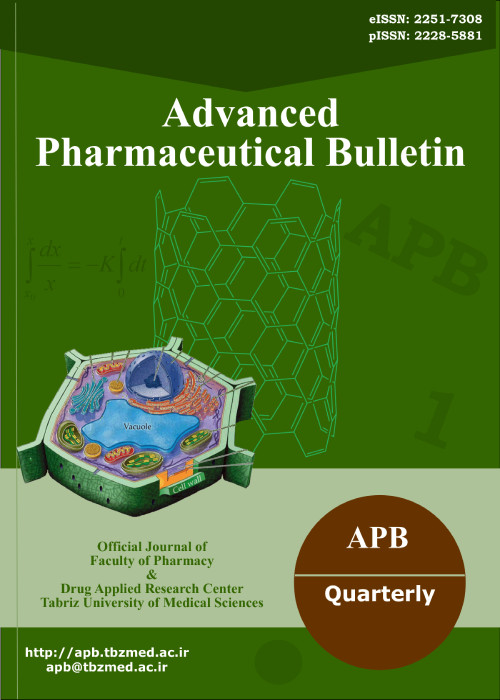Effects of Enzyme Induction and/or Glutathione Depletion on Methimazole‐Induced Hepatotoxicity in Mice and the Protective Role of N-Acetylcysteine
Author(s):
Abstract:
Purpose
Methimazole is the most convenient drug used in the management of hyperthyroid patients. However, associated with its clinical use is hepatotoxicity as a life threatening adverse effect. The exact mechanism of methimazole-induced hepatotoxicity is still far from clear and no protective agent has been developed for this toxicity.Methods
This study attempts to evaluate the hepatotoxicity induced by methimazole at different experimental conditions in a mice model. Methimazole-induced hepatotoxicity was investigated in different situations such as enzyme-induced and/or glutathione-depleted animals.Results
Methimazole (100 mg/kg, i.p) administration caused hepatotoxicity as revealed by increase in serum alanine aminotransferase (ALT) activity as well as pathological changes of the liver. Furthermore, a significant reduction in hepatic glutathione content and an elevation in lipid peroxidation were observed in methimazole-treated mice. Combined administration of L-buthionine sulfoximine (BSO), as a glutathione depletory agent, caused a dramatic change in methimazole-induced hepatotoxicity characterized by hepatic necrosis and a severe elevation of serum ALT activity. Enzyme induction using phenobarbital and/or β-naphtoflavone beforehand, deteriorated methimazole-induced hepatotoxicity in mice. N-acetyl cysteine (300 mg/kg, i.p) administration effectively alleviated hepatotoxic effects of methimazole in both glutathione-depleted and/or enzyme-induced animals.Conclusion
The severe hepatotoxic effects of methimazole in glutathione-depleted animals, reveals the crucial role of glutathione as a cellular defense mechanism against methimazole-induced hepatotoxicity. Furthermore, the more hepatotoxic properties of methimazole in enzyme-induced mice, indicates the role of reactive intermediates in the hepatotoxicity induced by this drug. The protective effects of N-acetylcysteine could be attributed to its radical/reactive metabolite scavenging, and/or antioxidant properties as well as glutathione replenishment activitiesKeywords:
Enzyme induction , Glutathione , Hepatotoxicity , Methimazole , Mice , N , acetylcysteine
Language:
English
Published:
Advanced Pharmaceutical Bulletin, Volume:4 Issue: 1, Mar 2014
Pages:
21 to 28
magiran.com/p1213205
دانلود و مطالعه متن این مقاله با یکی از روشهای زیر امکان پذیر است:
اشتراک شخصی
با عضویت و پرداخت آنلاین حق اشتراک یکساله به مبلغ 1,390,000ريال میتوانید 70 عنوان مطلب دانلود کنید!
اشتراک سازمانی
به کتابخانه دانشگاه یا محل کار خود پیشنهاد کنید تا اشتراک سازمانی این پایگاه را برای دسترسی نامحدود همه کاربران به متن مطالب تهیه نمایند!
توجه!
- حق عضویت دریافتی صرف حمایت از نشریات عضو و نگهداری، تکمیل و توسعه مگیران میشود.
- پرداخت حق اشتراک و دانلود مقالات اجازه بازنشر آن در سایر رسانههای چاپی و دیجیتال را به کاربر نمیدهد.
In order to view content subscription is required
Personal subscription
Subscribe magiran.com for 70 € euros via PayPal and download 70 articles during a year.
Organization subscription
Please contact us to subscribe your university or library for unlimited access!


